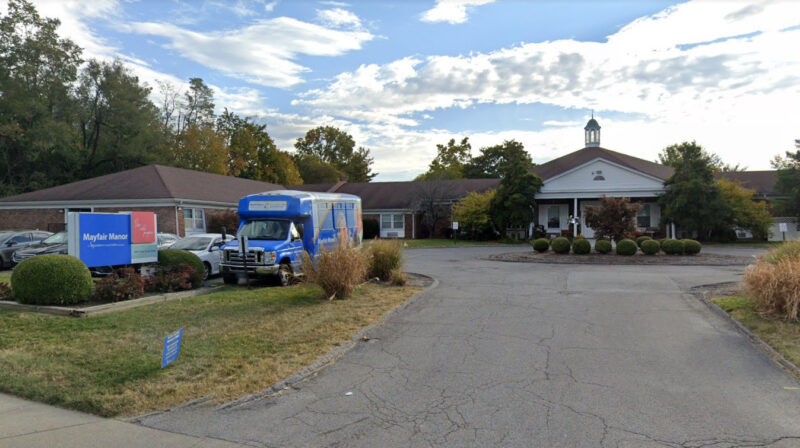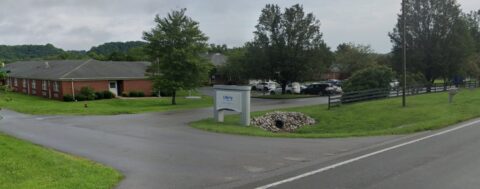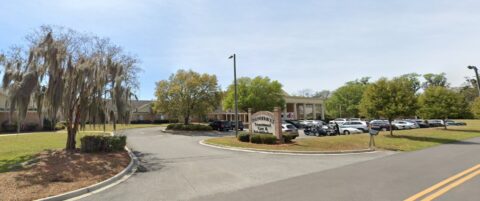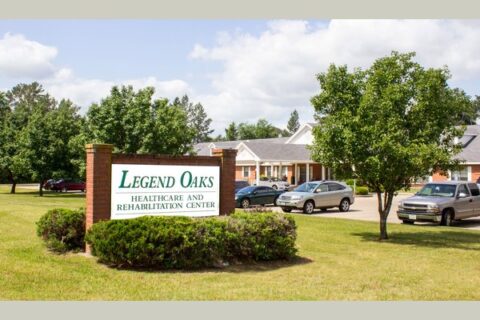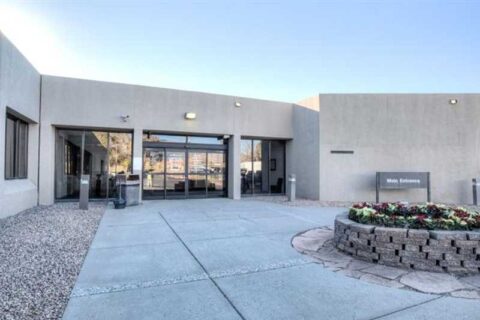State Findings:
Ensure that a nursing home area is free from accident hazards and provides adequate supervision to prevent accidents.
**NOTE- TERMS IN BRACKETS HAVE BEEN EDITED TO PROTECT CONFIDENTIALITY** 51155
Based on interview, record review, review of the facility’s policies, review of the facility’s investigation, and review of the website Weatherchannel.com, the facility failed to have an effective system in place to ensure residents’ safety for 1 of 39 sampled residents (Resident (R) 6). On [DATE], R6 eloped from the facility unescorted, unsupervised, and without staff knowledge.
On [DATE] at 7:27 PM, the Chief Executive Officer (CEO) and Regional Nurse Consultant (RNC) were provided a copy of the CMS Immediate Jeopardy (IJ) Template and notified that the failure to ensure residents were provided supervision and protected from further elopement is likely to cause serious injury, impairment, or death and constituted IJ at 42 CFR 483.25 F689. The IJ at F689 also constituted Substandard Quality of Care (SQC) at 42 CFR 483.25. The IJ was determined to exist on [DATE] when the facility discovered R6 had eloped from the building.
The facility provided an acceptable plan for the removal of the IJ on [DATE] at 11:27 AM. This plan alleged the IJ was removed, and the deficient practice was corrected on [DATE], prior to the initiation of the investigation. The plan provided by the facility alleged the following:
1. On [DATE] R6 was dressed in pants, pull over shirt, and tennis shoes. The temperature was 84 degrees Fahrenheit (F). R6 was placed on one-on-one supervision upon coming back into the facility on [DATE]. R6 was helped to her room and a head-to-toe assessment by the Director of Nursing (DON) was completed on [DATE] with no injuries or concerns noted. R6 had a pain assessment completed by a licensed nurse on [DATE] with no concerns identified. R6 had a new elopement risk assessment and a care plan update completed on [DATE] by the RNC. R6 had a Brief Interview for Mental Status (BIMS) completed on [DATE] with a score of 12 (moderate cognitive impairment). R6’s physician and family were notified of the elopement on [DATE]. Certified Nurse Aide (CNA) 3 who was on her 15-minute break sitting in her car in front of the
facility, saw R6 come outside. This CNA notified staff inside the facility by calling them on the phone while continually watching the resident until staff came out, and the resident went back inside the facility with staff.
2. A head count of all residents was completed by the Social Services Director (SSD) and the DON on [DATE], and all residents were accounted for. The Director of Maintenance (DOM) rechecked all door locks and alarms, and all were in working order on [DATE]. The Regional [NAME] President (RVP) and Chief Executive Officer (CEO) also checked all door locks and alarms on [DATE], and all were in working order.
A review of all door checks for the previous 30 days before the elopement, [DATE] to [DATE], was performed by the RVP on [DATE], and all checks had been completed. On [DATE] the RVP reviewed elopement drills for the last 90 days, [DATE] to [DATE], and all had been completed. On [DATE] the DON reviewed the last 30 days, [DATE] to [DATE], of events for current residents for any noted attempts of elopements. No concerns were identified. The RNC and the [NAME] President of Clinical Operations (VPCO) reviewed the last 30 days, [DATE] to [DATE], of progress notes looking for signs of elopement or exit seeking, and none were noted on [DATE]. All residents received a new elopement risk assessment on [DATE] by the DON, Assistant Director of Nursing (ADON), Unit Manager (UM), or RNC. Any resident who was at risk based on the assessment had their care plan reviewed and revised as needed, and the elopement binders were reviewed to ensure residents were in the binder.
3. Initiated and completed on [DATE], the RNC educated the CEO and the DON on the Comprehensive and Baseline care plan policies. Education was started on [DATE] and was completed for all staff including clinical staff, housekeeping, dietary, administrative, business office, therapy, and activities by [DATE] on the Comprehensive and Baseline care plan policies by the CEO, DON, UM, ADON, Minimum Data Set (MDS) Nurse Coordinator, or the RNC. A post-test was administered to all staff until a test score of 100% was achieved. Test questions were as follows: 1. What is a code green? 2. How do you know who is an elopement risk? 3. If you see a resident walking up to doors, pushing on doors, or talking of leaving, what should you do? 4. If a regular visiting family member asks for the door code, is it ok to give it to them? 5. If you hear a door alarm ringing, you go to the door, and you see no resident around, what should you do? 6. What is the difference in exit seeking and wandering? 7. How or where are interventions updated for exit
seeking residents? 8. Where are the elopement books located? 9. What is tailgating? 10. What do you do when a code green is paged? 11. Do you let anyone out of exit doors if you are unsure if they are a resident?12. How does anyone alert a nurse to a change in condition or behaviors of a resident?
Any staff not educated by [DATE], new staff, or new agency staff would be educated by the CEO, DON, ADON, UM, SSD, MDS Nurse Coordinator, or RNC prior to them working. Starting on [DATE], the post-test on the education of policies would be given to 15 random staff weekly for 30 days, then 10 random staff for the next 30 days, and then five random staff for the next 30 days to make sure staff members were retaining knowledge. A grade of 100% was required or re-education was to be completed. The post-test was to be administrated by the CEO, DON, ADON, UMs, or SSD. Starting on [DATE], elopement drills would be conducted daily for 10 days by the Director of Maintenance (DOM) or Weekend Manager and then monthly thereafter. Starting on [DATE], all residents’ progress notes would be read seven days a week for any exit seeking behavior or elopement concerns by the CEO, DON, UM, SSD, ADON, or RNC for 30 days and then Monday through Friday in the daily clinical morning meeting for 60 days. Any resident identified would have an elopement assessment completed, and if determined to be at risk, would have interventions put in place, such as the care plans reviewed/revised as needed and the elopement binder reviewed/revised as needed. Starting on [DATE] the CEO, DON, ADON, UM, SSD, MDS Nurse Coordinator, or RNC would review all new admissions Monday through Friday with Saturday and Sundays being reviewed on Mondays. This would occur for 90 days to ensure any resident who was assessed on admission as being an elopement risk would have this on the baseline care plan or a comprehensive care plan and would be implemented addressing the elopement risk.
4. A Quality Assurance Performance Improvement (QAPI) meeting was held on [DATE] to review this plan of correction. The QAPI committee members, the Medical Director, CEO, DON, Activities Director, UM, ADON, SSD, DOM, Therapy Director, and MDS Nurse Coordinator attended and would attend as able to do so. The Medical Director had no other recommendations. Starting on [DATE] QAPI would be held weekly for four weeks. On [DATE] the DOM, Rehabilitation Services Manager, MDS Nurse Coordinator, Activities Director, SSD, Medical Director, ADON, and the DON were present for the QAPI meeting. On [DATE] the Medical Director, CEO, UM, ADON, and the DON were present for the QAPI meeting. On [DATE] the Medical Director, CEO, UM, ADON, and the DON were present for the QAPI meeting. On [DATE] the Medical Director, CEO, UM, ADON, and the DON were present for the QAPI meeting. Weekly QAPI meetings were held to discuss reportables, elopement education, to review audits, to verify this plan was working, and to achieve compliance. QAPI meetings would then go to monthly thereafter. The QAPI committee would make
any recommendations or changes to this plan if compliance was not being achieved. There were no
concerns with compliance through the QAPI process.
An Extended Survey was initiated on [DATE], and the State Survey Agency (SSA) validated the facility’s IJ Removal Plan on [DATE]. Based on the findings of the survey, it was determined the IJ was removed and the deficient practice was corrected as alleged on [DATE], prior to initiation of the investigation. Therefore, the IJ was determined to constitute Past Jeopardy.
The findings include:
Review of the facility’s policy titled, Elopement, revised [DATE], revealed each resident should be evaluated for elopement risk upon admission and re-evaluated as needed. Additionally, a care plan would be developed and implemented with interventions in place for each resident identified as an elopement risk.
Review of R6’s electronic medical record (EMR) Face Sheet revealed the facility admitted the resident on [DATE] with diagnoses to include urinary tract infection, adult failure to thrive, and anxiety disorder. Further review revealed R6 was discharged from the facility on [DATE] at 6:03 PM and sent to an acute care facility for an evaluation.
Review of R6’s admission Observation Detail List Report, dated [DATE], revealed R6 was assessed to be at risk for elopement.
Review of R6’s Baseline Care Plan, dated [DATE], revealed no documented evidence the facility developed a care plan to address R6’s risk for elopement.
Review of R6’s quarterly MDS, with an Assessment Reference Date (ARD) of [DATE], revealed the facility assessed the resident to have a BIMS score of 12 out of 15, indicating she was moderately cognitively impaired. The MDS also revealed R6 required partial/moderate assistance with ambulation.
Review of R6’s Progress Note, dated [DATE], revealed R6 was seen by Licensed Practical Nurse (LPN) 1, walking up the hall with her belongings packed stating she was going to be picked up by the sheriff.
Review of R6’s Progress Note, dated [DATE], by Registered Nurse (RN) 1 revealed R6 exhibited more confusion than she did on [DATE].
Review of the Facility Reported Incident, dated [DATE], revealed R6 was observed by CNA3 walking in the front parking lot on [DATE] at 10:37 AM unsupervised, and the facility was unable to determine the cause of the elopement. According to the internal investigation documentation, the Weather Channel revealed the outside temperature for [DATE] was 86 degrees F, sunny skies with a breeze. This was verified by the State Survey Agency (SSA) Surveyor at Weatherchannel.com.
In an interview with R6’s daughter and emergency contact on [DATE] at 9:22 AM, the daughter stated R6 was confused and recently diagnosed with dementia by two separate hospitals. The daughter stated R6 was admitted to the facility on [DATE] to be with her spouse, who had suffered a heart attack a couple of days after R6’s arrival to the facility and was transferred to a local hospital. The daughter stated R6’s spouse expired the day she eloped from the facility. The daughter stated the facility’s staff reported to her that R6 walked out the front door. She stated the facility’s staff told her R6 was dressed in normal clothing, and staff failed to recognize R6 was not a visitor. She stated the facility’s staff told her R6 had told staff she was going to visit her spouse.
In an interview with CNA3 on [DATE] at 12:00 PM, she stated she was the aide who witnessed R6 in the facility’s parking lot. She stated the facility had conducted an elopement drill earlier that morning. She stated after the elopement drill, CNA3 went out of the building at 10:30 AM to take a 15-minute break in her car. She stated she saw R6 walking outside in the parking lot approximately 20 feet from the building’s entrance, and she recognized R6. She stated she then called CNA1, who was working inside the building, to ask about R6 being outside. She stated staff immediately came out and helped assist R6 back inside. According to CNA3, R6 stated she was going to the hospital to see her husband. When CNA3 was asked how R6 exited the building, CNA3 stated, I’m guessing she followed someone out. CNA3 stated she was parked in the fourth spot on the north side of the facility, and R6 was seen walking away from the building toward the road and was approximately 20 feet from the front door at the round landscaping circle area.
In an interview with LPN1 on [DATE] at 8:02 PM, she stated R6 was mostly confused. LPN1 stated she felt R6 was an elopement risk the day she was assigned to her on [DATE]. LPN1 stated she did not remember if the provider was notified regarding R6’s increased confusion and wandering behaviors.
A telephone interview with RN5, who was present at the time of the elopement and one of R6’s nurses, was attempted on [DATE] at 3:00 PM and again at 7:45 PM. Voice messages were left by the SSA Surveyor for a return call; however, no return call was received.
In an interview with the Business Office Manager (BOM) on [DATE] at 9:15 AM, she stated she was working the front desk the day of the incident. She stated her job during the elopement drill was to watch/check the front desk, front door, front porch, and front conference room. She stated she was not familiar with the resident and did not know what R6 looked like. The BOM stated she did not remember if she opened the door or if she was at the front desk at the time of the elopement.
In an interview with the former Social Worker (SW) on [DATE] at 9:20 PM, she stated R6 was alert and oriented with intermittent confusion, and sundowning (when residents with dementia experience increased confusion and wandering from late afternoon into the night) was a concern.
In an interview with the DOM on [DATE] at 3:45 PM, he stated he was working the day of the elopement; however, he did not know how R6 got out. He stated the surveillance cameras were updated after [DATE], and therefore no surveillance tapes were available for review.
In an interview with the ADON on [DATE] at 1:13 PM, she stated R6 arrived at the facility to be with her spouse, who was a resident at the facility. She stated CNA3, who was taking a break and sitting in her car in the front parking lot, called into the building to ask if R6 was allowed to be outside unsupervised, and CNA3 was told no. She stated staff then went out to bring R6 back inside the building. She stated she attempted to call and notify R6’s spouse, since he was listed as next of kin and was in the hospital, and then called R6’s daughter and made her aware of the elopement. The ADON stated, I assumed the resident got out by tailgating behind someone else leaving.
In an interview with the DON on [DATE] at 2:15 PM, she stated it was her expectation that the staff member responsible for managing the front door would ensure that no resident walked out behind any visitor, and they should verify the door was fully closed to prevent an elopement.
In an interview with the CEO on [DATE] at 1:40 PM, she stated she was scheduled to be off work the day of the incident. She stated she was not in the building at the time of the elopement and was called into the facility after the elopement occurred. The CEO stated R6 made it to the front of the building and was brought back in by CNAs. She further stated elopement education was provided to all staff. The CEO stated she was unsure how R6 exited the building.
Your Experience Matters
...and we want to hear it.
NHAA is here to assist families, residents, and the community by sounding the alarm on issues like those found above. This nursing home and many others across the country are cited for abuse and neglect.
If you have or had a loved one living in this nursing home or any other nursing home where you suspect any form of abuse or neglect, contact us immediately.
We have helped many already and we can help you and your loved one as well by filing a state complaint, hiring a specialized nursing home attorney or helping you find a more suitable location for your loved one.
You can make a difference, even if your loved one has already passed away.
Please give us a call at 1-800-645-5262 or fill out our form detailing your experience.
Personal Note from NHA-Advocates
NHAA shares with all the families of loved ones who are confined to nursing homes the pain and anguish of putting them in the care of someone else. We expect our loved ones to be treated with dignity and honor in the homes we place them. We cannot emphasize enough to family members of nursing home residents; frequent visits are essential to our loved ones’ well-being and safety.
If you are struggling and upset, click here to understand your options, or contact us through our contact form or call our toll free hot line number: 1-800-645-5262.

